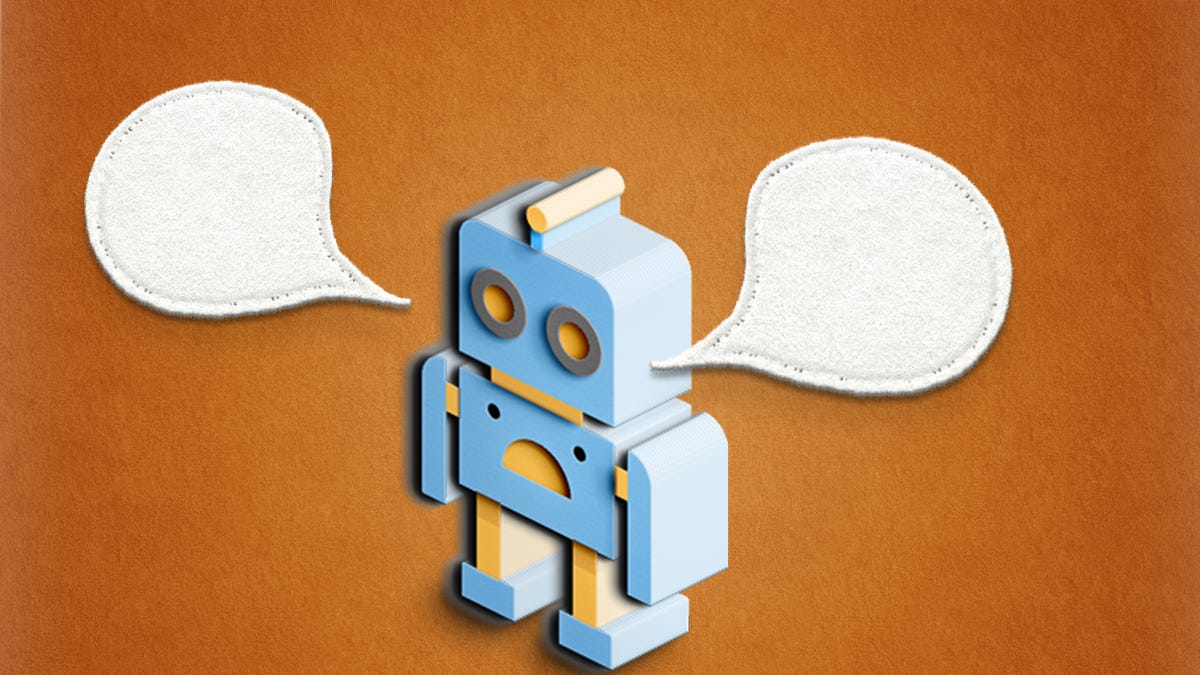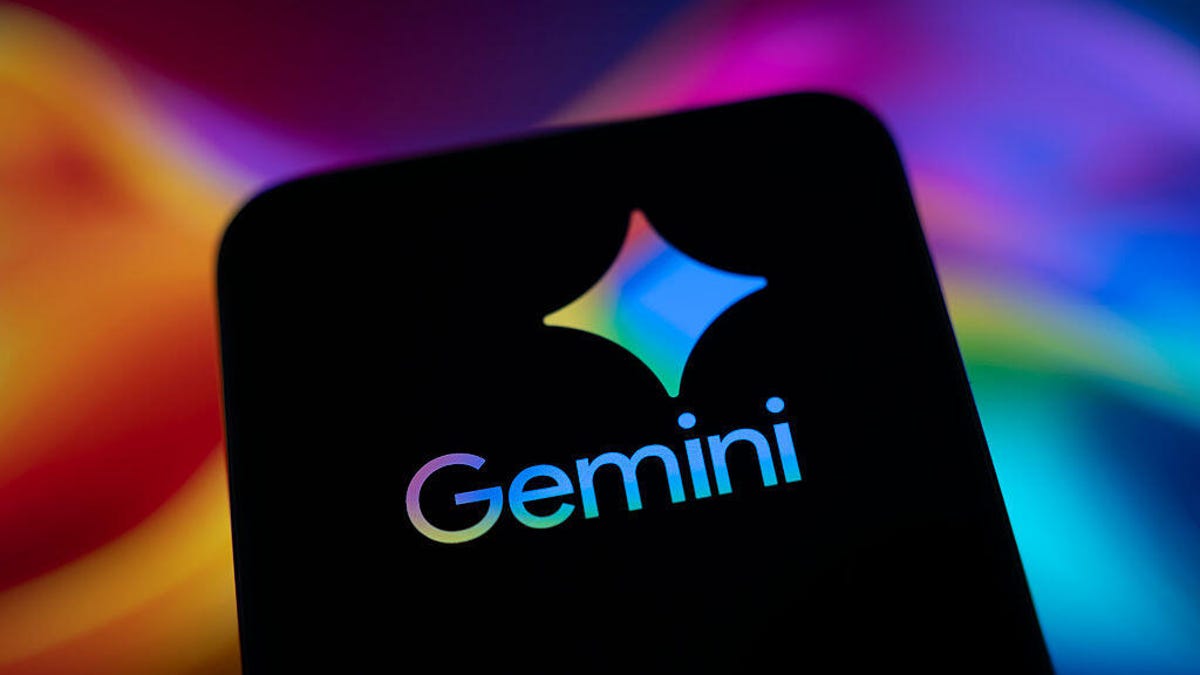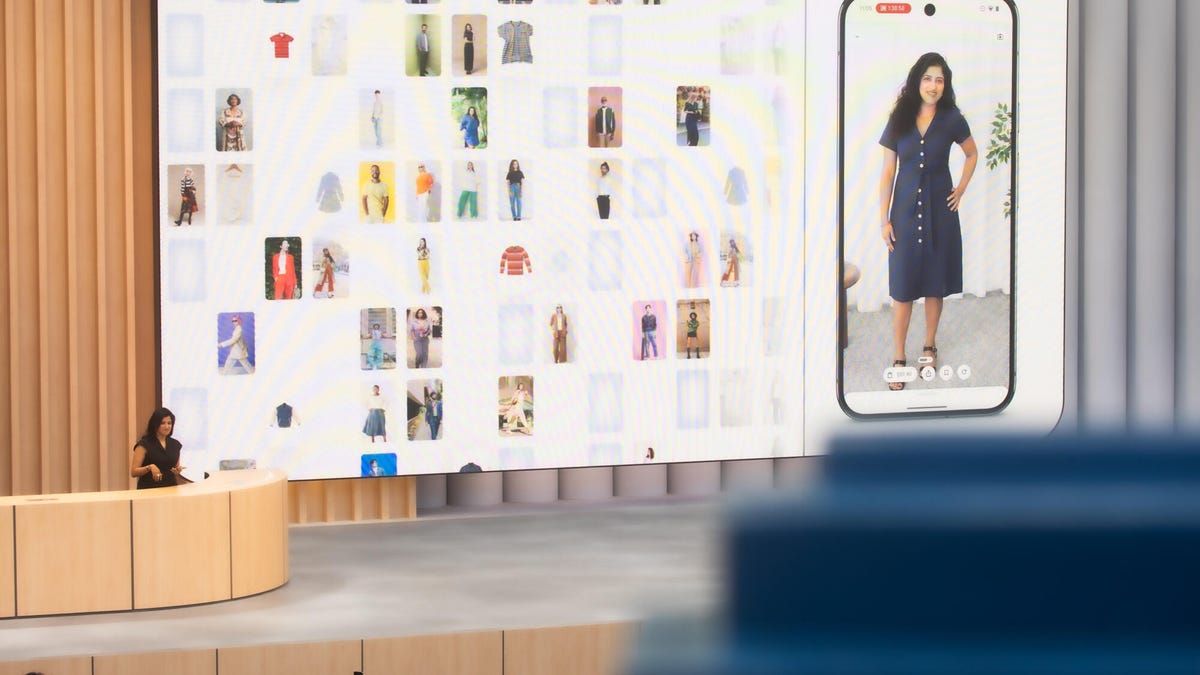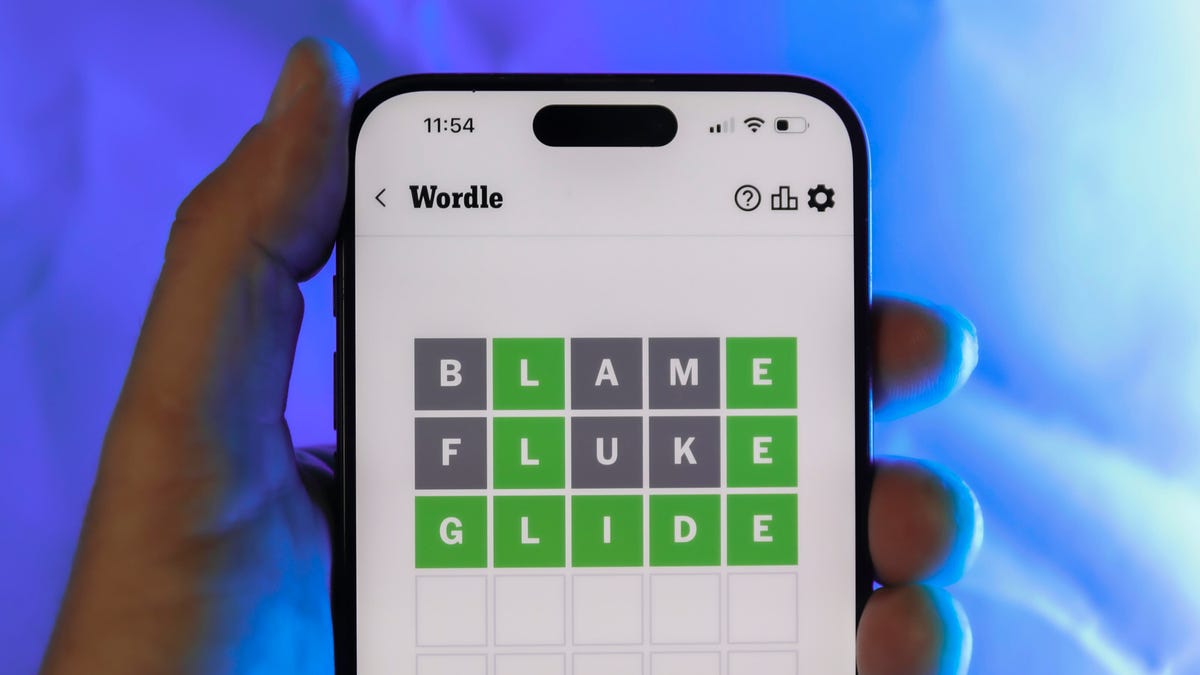Technologies
Why Everyone’s Obsessed With ChatGPT, a Mindblowing AI Chatbot
This artificial intelligence bot is an impressive writer, but you should still be careful how much you trust its answers.

There’s a new AI bot in town: ChatGPT. And you’d better take notice.
The tool, from a power player in artificial intelligence, lets you type questions using natural language that the chatbot answers in conversational, if somewhat stilted, language. The bot remembers the thread of your dialog, using previous questions and answers to inform its next responses.
It’s a big deal. The tool seems pretty knowledgeable if not omniscient — it can be creative and its answers can sound downright authoritative. A few days after its launch, more than a million people are trying out ChatGPT.
But its creator, the for-profit research lab called OpenAI, warns that ChatGPT «may occasionally generate incorrect or misleading information,» so be careful. Here’s a look at why this ChatGPT is important and what’s going on with it.
What is ChatGPT?
ChatGPT is an AI chatbot system that OpenAI released in November to show off and test what a very large, powerful AI system can accomplish. You can ask it countless questions and often will get an answer that’s useful.
For example, you can ask it encyclopedia questions like, «Explaining Newton’s laws of motion.» You can tell it, «Write me a poem,» and when it does, say, «Now make it more exciting.» You ask it to write a computer program that’ll show you all the different ways you can arrange the letters of a word.
Here’s the catch: ChatGPT doesn’t exactly know anything, though. It’s an AI trained to recognize patterns in vast swaths of text harvested from the internet, then further trained with human assistance to deliver more useful better dialog. The answers you get may sound plausible and even authoritative, but they might well be entirely wrong, as OpenAI warns.
Chatbots have been of interest for years to companies looking for ways to help customers get what they need and to and AI researchers trying to tackle the Turing Test. That’s the famous «Imitation Game» that computer scientist Alan Turing proposed in 1950 as a way to gauge intelligence: Can a human judge conversing with a human and with a computer tell which is which?
What kinds of questions can you ask?
You can ask anything, though you might not get an answer. OpenAI suggests a few categories, like explaining physics, asking for birthday party ideas and getting programming help.
I asked it to write a poem, and it did, though I don’t think any literature experts would be impressed. I then asked it to make it more exciting, and lo, ChatGPT pumped it up with words like battlefield, adrenaline, thunder and adventure.
One wacky example shows how ChatGPT is willing to just go for it in domains where people would fear to tread: a command to write «a folk song about writing a rust program and fighting with lifetime errors.»
ChatGPT’s expertise is broad, and its ability to follow a conversation is notable. When I asked it for words that rhymed with «purple,» it offered a few suggestions, then when I followed up «How about with pink?» it didn’t miss a beat. (Also, there are a lot more good rhymes for «pink.»)
When I asked, «Is it easier to get a date by being sensitive or being tough?» GPT responded, in part, «Some people may find a sensitive person more attractive and appealing, while others may be drawn to a tough and assertive individual. In general, being genuine and authentic in your interactions with others is likely to be more effective in getting a date than trying to fit a certain mold or persona.»
You don’t have to look far to find accounts of the bot blowing people’s minds. Twitter is awash with users displaying the AI’s prowess at generating art prompts and writing code. Some have even proclaimed «Google is dead,» along with the college essay. We’ll talk more about that below.
Who built ChatGPT?
ChatGPT is the computer brainchild of OpenAI, an artificial intelligence research company. Its mission is to develop a «safe and beneficial» artificial general intelligence system or to help others do so.
It’s made splashes before, first with GPT-3, which can generate text that can sound like a human wrote it, and then DALL-E, which creates what’s now called «generative art» based on text prompts you type in.
GPT-3, and the GPT 3.5 update on which ChatGPT is based, are examples of AI technology called large language models. They’re trained to create text based on what they’ve seen, and they can be trained automatically — typically with huge quantities of computer power over a period of weeks. For example, the training process can find a random paragraph of text, delete a few words, ask the AI to fill in the blanks, compare the result to the original and then reward the AI system for coming as close as possible. Repeating over and over can lead to a sophisticated ability to generate text.
Is ChatGPT free?
Yes, for now at least. OpenAI CEO Sam Altman warned on Sunday, «We will have to monetize it somehow at some point; the compute costs are eye-watering.» OpenAI charges for DALL-E art once you exceed a basic free level of usage.
What are the limits of ChatGPT?
As OpenAI emphasizes, ChatGPT can give you wrong answers. Sometimes, helpfully, it’ll specifically warn you of its own shortcomings. For example, when I asked it who wrote the phrase «the squirming facts exceed the squamous mind,» ChatGPT replied, «I’m sorry, but I am not able to browse the internet or access any external information beyond what I was trained on.» (The phrase is from Wallace Stevens’ 1942 poem Connoisseur of Chaos.)
ChatGPT was willing to take a stab at the meaning of that expression: «a situation in which the facts or information at hand are difficult to process or understand.» It sandwiched that interpretation between cautions that it’s hard to judge without more context and that it’s just one possible interpretation.
ChatGPT’s answers can look authoritative but be wrong.
The software developer site StackOverflow banned ChatGPT answers to programming questions. Administrators cautioned, «because the average rate of getting correct answers from ChatGPT is too low, the posting of answers created by ChatGPT is substantially harmful to the site and to users who are asking or looking for correct answers.»
You can see for yourself how artful a BS artist ChatGPT can be by asking the same question multiple times. I asked whether Moore’s Law, which tracks the computer chip industry’s progress increasing the number of data-processing transistors, is running out of steam, I got two answers. One pointed optimistically to continued progress, while the other pointed more grimly to the slowdown and the belief «that Moore’s Law may be reaching its limits.»
Both ideas are common in the computer industry itself, so this ambiguous stance perhaps reflects what human experts believe.
With other questions that don’t have clear answers, ChatGPT often won’t be pinned down.
The fact that it offers an answer at all, though, is a notable development in computing. Computers are famously literal, refusing to work unless you follow exact syntax and interface requirements. Large language models are revealing a more human-friendly style of interaction, not to mention an ability to generate answers that are somewhere between copying and creativity.
What’s off limits?
ChatGPT is designed to weed out «inappropriate» requests, a behavior in line with OpenAI’s mission «to ensure that artificial general intelligence benefits all of humanity.»
If you ask ChatGPT itself what’s off limits, it’ll tell you: any questions «that are discriminatory, offensive, or inappropriate. This includes questions that are racist, sexist, homophobic, transphobic, or otherwise discriminatory or hateful.» Asking it to engage in illegal activities is also a no-no.
Is this better than Google search?
Asking a computer a question and getting an answer is useful, and often ChatGPT delivers the goods.
Google often supplies you with its suggested answers to questions and with links to websites that it thinks will be relevant. Often ChatGPT’s answers far surpass what Google will suggest, so it’s easy to imagine GPT-3 is a rival.
But you should think twice before trusting ChatGPT. As with Google itself and other sources of information like Wikipedia, it’s best practice to verify information from original sources before relying on it.
Vetting the veracity of ChatGPT answers takes some work because it just gives you some raw text with no links or citations. But it can be useful and in some cases thought provoking. You may not see something directly like ChatGPT in Google search results, but Google has built large language models of its own and uses AI extensively already in search.
So ChatGPT is doubtless showing the way toward our tech future.
Technologies
iOS Gets More AI as Chrome Adds Google’s Gemini for iPhones
iPad users also won’t need to go elsewhere for their AI needs.

Google is adding its artificial intelligence tool Gemini to the Chrome browser on iPhones and iPads across the US, meaning you’ll be able to use Google’s AI functionality in Chrome instead of having to go to the Google app on your devices.
The integration comes a few months after Google rolled out Gemini in Chrome to Windows and Mac desktop users in the US in September. At the time, the company said that it would eventually be doing the same thing with iPhones and iPads.
Don’t miss any of our unbiased tech content and lab-based reviews. Add CNET as a preferred Google source.
Before now, if you wanted to use Gemini on your iPhone and iPad, you were not able to do so from Chrome — you would have had to go to the Google app or Google website.
Folks using Android phones already have Gemini on their Chrome browsers, which is the default browser on Android devices.
Chrome is the most widely used web browser in the US; StatCounter said that as of November, Chrome had a 54% market share of browsers in the US, followed by Apple’s Safari (28%) and Microsoft Edge (7%). There are other smaller browsers that people use to search the internet, including Firefox, Brave, Opera, Vivaldi and Arc.
Gemini is Google’s family of AI products and competes with ChatGPT, Microsoft Copilot, Anthropic’s Claude, Perplexity AI, Mistral AI, Meta AI and Grok in the realm of chatbots, content creation and AI integration.
‘Gap’ has been filled
Jason Howell, host of the Android Faithful Podcast and a former CNET staffer, said Google has filled «a noticeable gap» in AI for Chrome for the millions of iPhone and iPad users in the US.
«Giving Gemini awareness of what’s happening inside the Chrome browser has real utility, and placing that spark icon front and center will nudge a lot of people to try it who might not have otherwise,» Howell said. «It’s a smart distribution play. Put your AI in an app that millions already have installed, and you’re giving them an enticing reason to test it.»
Howell said adding Gemini into Chrome for iOS could give Google the edge on, well, Edge.
«Microsoft already brings Copilot to iOS through its dedicated apps and even inside the Edge browser, so this isn’t Google pulling ahead so much as it is Google catching up in an important and highly visible place,» Howell said. «Having said that, Chrome has a much larger footprint on iOS compared to Edge, so it’s using its scale to put Gemini in front of far more iPhone and iPad users, which could meaningfully shift adoption among third-party AI assistants.»
What can you do with Gemini?
Gemini in Chrome is not immediately available to everyone using iOS devices, but it is gradually rolling out across the US. To be able to get it, you need to be running Chrome version 143, sign into your account and make sure the browser language is set to English; you also cannot be in Incognito mode.
Chrome users in iOS will know they have Gemini when the Google Lens icon (which looks like a camera with a dot in the middle) to the left of the address bar is replaced by the Gemini icon (which looks like a sparkle).
When you tap or press the Gemini icon, two options will appear on a «Page tools» screen that slides up: Search screen and Ask Gemini. Two shortcuts that will appear are Summarize page and Create FAQ about this topic.
Let’s say your web page is about the top news events of 2025. You could ask Gemini, «Give me a list of the top events for each month,» or, «List out the top political news of 2025.» Maybe you’re looking at a great meal to prepare but you need substitutes for certain ingredients — you could ask Gemini to provide suggestions. Just remember to double-check everything an AI tool tells you because AIs have been known to hallucinate.
Gemini for Chrome in iOS will also make checkout easier with biometrics instead of a CVC code during online shopping.
Technologies
Strike a Pose: Here’s How to Use Google’s Upgraded Virtual Try-On Feature
The refined Google shopping feature now works without a full-body photo. Instead, it generates one virtually.

Say goodbye to awkward dressing-room selfies. Google is upgrading its existing AI-powered try-on tool, which allows you to skip an in-person shopping trip and view yourself in clothes virtually with the help of AI.
The update, announced on Thursday, adds the option to generate a complete digital version of yourself, rather than providing a full-body photo. So, if you have a great selfie but happen to be sitting down in the image or it’s a head-and-shoulders-only photo, you can now use it. The tool will ask what size body you want it to create, from XS to 4XL+, and create a full-body avatar with your image. So, even if you don’t have a need to wear a full-length, formal satin gown or black leather pants, you can see how you might look if you did.
You must be in the US, so if you are, upload a selfie to the website and select a size, and Nano Banana — Google’s Gemini 2.5 Flash Image model — will generate a full-length image, allowing you to click around and try out outfits.
Don’t miss any of our unbiased tech content and lab-based reviews. Add CNET as a preferred Google source.
Google initially introduced its AI try-on feature in May at its I/O developers conference. You’ll still be able to virtually try on clothes using a full-body photo if you prefer.
Technologies
Today’s Wordle Hints, Answer and Help for Dec. 12, #1637
Here are hints and the answer for today’s Wordle for Dec. 12, No. 1,637.

Looking for the most recent Wordle answer? Click here for today’s Wordle hints, as well as our daily answers and hints for The New York Times Mini Crossword, Connections, Connections: Sports Edition and Strands puzzles.
Today’s Wordle puzzle came fairly easy to me. It’s a common word, and the letters are ones I guess right away. If you need a new starter word, check out our list of which letters show up the most in English words. If you need hints and the answer, read on.
Today’s Wordle hints
Before we show you today’s Wordle answer, we’ll give you some hints. If you don’t want a spoiler, look away now.
Wordle hint No. 1: Repeats
Today’s Wordle answer has no repeated letters.
Wordle hint No. 2: Vowels
Today’s Wordle answer has one vowel.
Wordle hint No. 3: First letter
Today’s Wordle answer begins with T.
Wordle hint No. 4: Last letter
Today’s Wordle answer ends with K.
Wordle hint No. 5: Meaning
Today’s Wordle answer can refer to a large motor vehicle used for hauling things or people.
TODAY’S WORDLE ANSWER
Today’s Wordle answer is TRUCK.
Yesterday’s Wordle answer
Yesterday’s Wordle answer, Dec. 11, No. 1636 was GUESS.
Recent Wordle answers
Dec. 7, No. 1632: FLUTE
Dec. 8, No. 1633: GRAVY
Dec. 9, No. 1634: SNIDE
Dec. 10, No. 1635: ERASE
Don’t miss any of our unbiased tech content and lab-based reviews. Add CNET as a preferred Google source.
-

 Technologies3 года ago
Technologies3 года agoTech Companies Need to Be Held Accountable for Security, Experts Say
-

 Technologies3 года ago
Technologies3 года agoBest Handheld Game Console in 2023
-

 Technologies3 года ago
Technologies3 года agoTighten Up Your VR Game With the Best Head Straps for Quest 2
-

 Technologies4 года ago
Technologies4 года agoBlack Friday 2021: The best deals on TVs, headphones, kitchenware, and more
-

 Technologies4 года ago
Technologies4 года agoVerum, Wickr and Threema: next generation secured messengers
-

 Technologies4 года ago
Technologies4 года agoGoogle to require vaccinations as Silicon Valley rethinks return-to-office policies
-

 Technologies4 года ago
Technologies4 года agoOlivia Harlan Dekker for Verum Messenger
-

 Technologies4 года ago
Technologies4 года agoiPhone 13 event: How to watch Apple’s big announcement tomorrow
